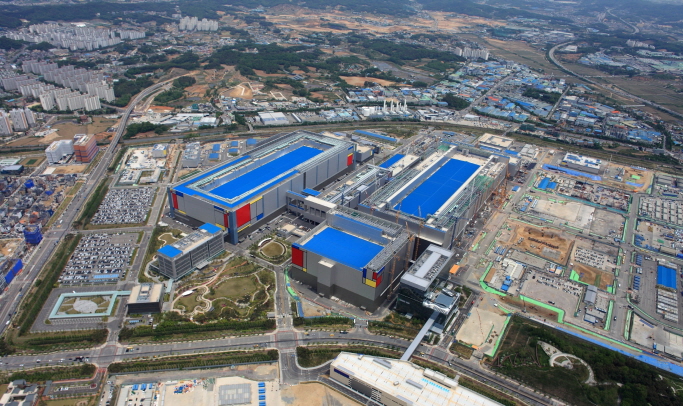
This photo provided by Samsung Electronics Co. on May 21, 2020, shows the company’s chip plant in Pyeongtaek, south of Seoul.
SEOUL, May 14 (Korea Bizwire) — South Korea’s capacity share in the advanced logic chip market is likely to decline further down the road, a report showed Friday, as the United States pushes to beef up its presence by attracting more global semiconductor firms to build factories on its turf.
South Korea was expected to represent 20 percent of global wafer capacity of 10-nanometer (nm) and below nodes this year to rank second in the sector, but its share was projected to decline to 19 percent in 2025 and 17 percent in 2027 to lose its runner-up spot, according to the latest report from market researcher Counterpoint Research.
The report estimates capacity of foundry firms and integrated device manufacturers based on their production locations.
The United States, which is trying to bolster its supply chain under the Joe Biden administration, was predicted to see its share rise from 18 percent in 2021 to 21 percent in 2025 and to 24 percent in 2027 as major chipmakers like Taiwan Semiconductor Manufacturing Company (TSMC), Intel Corp. and Samsung are set to build their new facilities in the country.
“We believe that under the CHIPS for America Act, both local and foreign players will be pushed to follow production schedules to avail government support,” Counterpoint Research said.
“Therefore, we forecast that the U.S.’ capacity share will get boosted to 21 percent (in 2025), surpassing South Korea’s, with the majority of nodes in the U.S. on 5nm and in Intel on 7nm.”
The report showed Taiwan, home to TSMC, was expected to maintain its No. 1 position in leading-edge logic chip capacity through 2027, despite a sharp decline in its market presence.
Taiwan was estimated to take a 55 percent share in 2021 before dropping to 44 percent in 2025 and 40 percent in 2027.
Counterpoint Research expected a 21 percent increase in the average annual wafer capacity of leading-edge logic chip nodes from 2021-2027 following chipmakers’ aggressive build-up in capacity.
(Yonhap)






